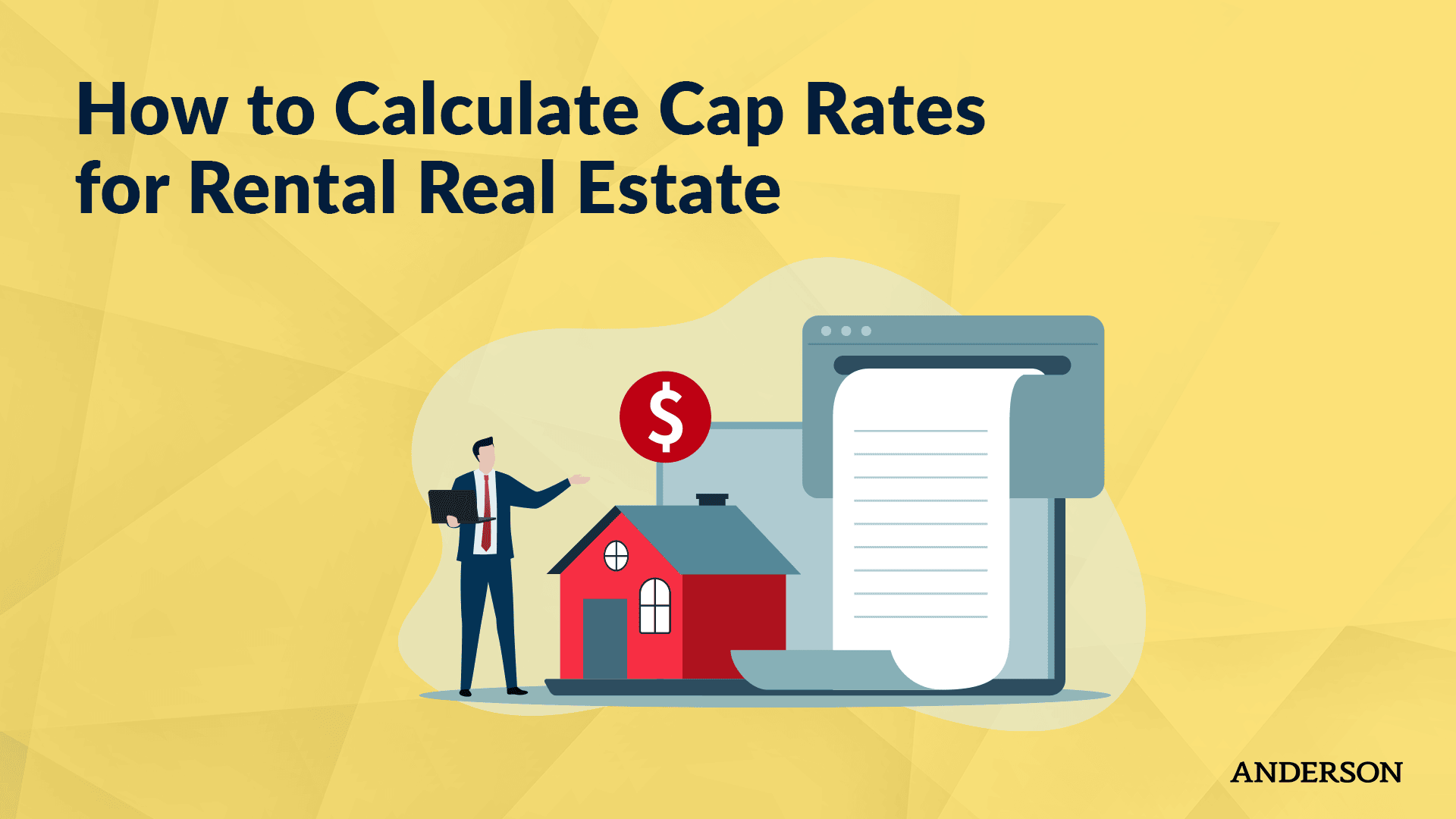
In this episode of Coffee with Carl, attorney Carl Zoellner provides a simple formula for calculating cap rates with rental real estate.
Updated December 6, 2024
As you know, I pull my content ideas for Coffee with Carl from our Platinum members’ frequently asked questions. A question I see a lot of involves how to calculate cap rates for rental real estate. Although many real estate investors use a quick mental-math method for estimating the cap rate on a given property, it’s worthwhile to walk through a simple example.
Real estate investors talk about “cap rate” all the time—but many don’t fully understand what it means or how to calculate it correctly. The capitalization rate (cap rate) is a simple formula that helps you estimate the potential return on a rental property based on its income and purchase price. Used properly, it’s a powerful way to compare deals, spot underperforming properties in your portfolio, and quickly evaluate whether a new investment is worth pursuing.
In this guide, we’ll walk through what cap rates are, how to calculate cap rate step by step, what’s considered a good cap rate for rental properties, and the limitations of relying on cap rate alone when analyzing real estate investments.
Key Takeaways: Cap Rates for Rental Properties
- Cap rate (capitalization rate) is a metric used to measure the performance of a rental real estate property, providing an estimate of the potential return on investment.
- Cap rate can help investors quickly assess the value of a property in comparison to other potential investments and is especially useful for commercial real estate investors.
- To calculate cap rate, follow this formula: (Gross income – expenses = net income) / purchase price * 100.
- Cap rates between 4% and 12% are generally considered good, but it’s important to remember that other factors, such as potential improvements, should also be considered when evaluating a property.
- Cap rate does not account for changes in cash flow due to improvements or renovations, and it does not consider leverage.
- While cap rate is a helpful tool for evaluating the potential of a real estate investment, it shouldn’t be the only factor considered. It’s essential to look at other aspects such as location, property condition, and market trends.
- Cap rates can vary between urban and suburban areas, and they depend on factors like property values, rent levels, and local economic conditions.
Cap rate is mainly relevant to real estate investors and lenders, as it provides insights into the property’s income-generating potential and can impact financing terms. Homebuyers are usually more concerned with property value.- Cap rate compression occurs when property values rise, causing the cap rate to decrease. This can make it more challenging for new investors to enter the market and may affect financing options.
First off, what are cap rates?
Cap rates (short for capitalization rates) are calculations performed to measure the performance of a piece of rental real estate. After running the numbers, you’ll arrive at the cap rate, expressed as a percentage, and use that to estimate the potential return on an investment property.
Schedule a consultation with one of Anderson Advisor’s business tax experts today to determine whether it’s possible to rent your personal residence to your business in an effort to lower your tax burden!
I recommend calculating cap rates on an annual basis for any investment property you hold. This is especially important if you have multiple properties in your portfolio. Calculating cap rates annually will allow you to know what properties are or aren’t performing. However, when first purchasing a piece of property, you have to make some assumptions about actual numbers.
To calculate cap rates, use the following formula:
- Gross income – expenses = net income
- Divide net income by purchase price
- Move the decimal 2 spaces to the right to arrive at a percentage. This is your cap rate.
Let’s look at an example.
Cap Rate Calculation Example
First, you’ll need to know the annual rental income the property will produce. If you’re considering buying a piece of property that was already a rental, you can usually have this info disclosed during your due diligence period. For our example, let’s assume a rental property pulls in $9,000 a year in gross rental income.
Once you have your gross rental income, subtract expenses. Property management fees are a common expense for investment properties, and these fees usually hover around 10%. For a rental property making $9,000 of income annually, property management fees will be around $900 annually. So, subtract $900 from that $9,000. Other expenses to subtract from gross rental income include annual maintenance costs, property taxes, and insurance. For this example, subtract $450 for annual maintenance, $710 for property taxes, and $650 for insurance. After subtracting these expenses from gross income, you have net income. For our example, the net income after all expenses is $6,290.
Once you know net rental income, divide that number by the purchase price. Next, take that number and move the decimal point two spaces to the right. This gives you the cap rate percentage.
For our example, let’s say the property was purchased for $40,000. Take the net income of $6,290 and divide it by $40,000. This gives us 0.15725. When you move the decimal point two spaces to the right, this gives us a cap rate of 15.7%.
So, again: a simple formula to calculate cap rates is:
- Gross income – expenses = net income
- Divide net income by purchase price
- Move the decimal 2 spaces to the right to arrive at a percentage. This is your cap rate.
Video example:
- Gross income ($9,000) – Expenses ($2,710) = net income ($6,290)
- Divide net income by purchase price ($40,000) = 0.157
- Move the decimal two spaces to the right to arrive at a percentage = 15.7%
Use the calculator below to calculate your cap rate.
Cap Rate Calculator
Keep in mind that this is a basic formula. As time goes on and you have real-world experience with, and firm numbers for the property, your cap rate calculations will evolve. You can adjust this formula or add additional expenses. There are lots of different methods investors use to calculate cap rates; this is a general and simple formula to figure a property’s cap rate.
Watch as Carl illuminates cap rates for investment properties.
Resources mentioned in this video
Check out our Tax & Asset Protection Workshop for more real estate strategies
Ask unlimited questions of attorneys & CPAs with Platinum membership
Got an idea for a future Coffee with Carl? Send it to Carl at cwc@andersonadvisors.com.
BONUS VIDEO
The capitalization rate of a property, or cap rate, is a percentage that expresses how well an investment property will perform. The cap rate should not be the only indicator a real estate investor uses to evaluate a property, but it is a very quick and convenient indicator for visualizing the value of a piece of real estate in comparison to other potential real estate investments.
How Do You Calculate a Cap Rate?
To calculate cap rates, use the following formula:
- Gross income – expenses = net income
- Divide net income by purchase price
- Move the decimal two spaces to the right to arrive at a percentage. This is your cap rate.
While the cap rate formula can start with any unit of time for the gross income input, it’s most commonly used with a one-year horizon. A month is simply too short of a timeframe to gauge a property’s return, especially if you’re talking about commercial real estate. The real estate market is constantly changing, and tenant occupancy is one factor that can change month to month, year to year. That said, a yearlong time frame for assessing the cap rate will provide you with the most accurate picture.
You might be wondering how a real estate investor can assess a property’s gross income and expenses. You can use the current gross income of the property, along with its current expenses to find the net income. If, for whatever reason, the investor is confident that they can squeeze more gross income out of a property while reducing its expenses, then it is possible that the investor would want to use different numbers to examine the cap rate.
What is a Cap Rate?
In simplest terms, a cap rate estimates a real estate investor’s potential return on a piece of real estate. It gives them an idea of whether or not pursuing a certain property would be worth it.
However, cap rate does not take into account changes in cash flow created by improvements or renovations, nor does it take into account leverage.
A cap rate can be used by investors to examine the true value of a piece of property on the fly, especially in comparison to other options.
For example, if the cap rate on a piece of commercial property is nine percent, and a certain mutual fund has shown to yield 12 percent growth year after year for the past 10 years, the investor may lose confidence in real estate investing.
Cap rate does not factor intangible factors, like potential improvements that could increase the cap rate. A cap rate can also be used to compare properties within a real estate portfolio and see which ones are underperforming.
How Do You Calculate a Cap Rate?
To calculate cap rates, use the following formula
- Gross income – expenses = net income
- Divide net income by purchase price
- Move the decimal two spaces to the right to arrive at a percentage.
Let's say an investor is looking at a four-unit quadplex, which still falls into the category of residential real estate. If this building is fully occupied and each tenant is paying $1,300 per month, then the property has a cash flow of $15,600 per person per year, or $62,400 for the whole building.
Now let’s say that the monthly expenses of this property average out to $900 per month, including property management, taxes, insurance, and maintenance. Over the course of a year, this quadplex will cost $10,800 to operate.
Take your gross income ($62,400) and subtract your expenses ($10,800), and you’re left with a net revenue of $51,600.
If you purchased this property for $200,000 and divide your net income ($51,600) by the purchase price ($200,000), it would yield a decimal of 0.258. After we move the decimal two places to the right, the cap rate would be 25.8 percent. This is actually a pretty good cap rate. But remember, we calculated the cap rate assuming the property and its units were fully occupied the entire year, which may not always be realistic depending on economic factors.
Frequently Asked Questions About Cap Rates:
What is the purpose of the cap rate calculation?
A cap rate calculation is a tool a real estate investor can use, especially in commercial real estate investing, to determine if a real estate deal is worth pursuing. It helps an investor look at the value of a property in comparison to other factors, like a property’s appearance or location.
Why is a real estate cap rate important for property investors?
Property investors are in real estate to make money. The better a deal is, the more they stand to make. Similar to someone comparison shopping to get the best price, a real estate investor wants to select the property that will generate the most cash flow. The cap rate equation allows them to gauge which property that might be.
What is considered a good cap rate?
Cap rates that fall between four percent and 12 percent are considered a good cap rate. However, it’s also important to remember that there are other factors to consider when investing in real estate, such as what the cap rate might be if improvements were made to the property.
What is a bad cap rate?
There’s not one numbers-based universal answer to this question, but a bad cap rate would be anything that’s less than the cap rate of a similar property. Again, keep in mind that the property with a lower cap rate might have more long-term potential depending on whether you can make improvements to the property to decrease costs or increase income.
Is cap rate the same as ROI?
Return on investment could be applied to any number that shows an investor how much money they’ll get back compared how much money they put into something. That said, cap rate is not the same as ROI. It is a percentage indicator that shows how strong a property’s potential is to create a substantial ROI.
What is the difference between cap rate and yield?
The yield percentage of a property is its annual income divided by its total cost. That said, it’s a little different than cap rate, which measures income divided by the price or value of a property. It doesn’t tell you anything about its cash flow in comparison to how much work and money you put into it. Yield is also referred to as a rate of return, and can factor into other considerations like leverage and rental property tax deductions in terms of figuring out a property’s total overall cost.
How do cap rates vary between urban and suburban areas?
Cap rates depend on housing prices and rent, or in the case of commercial real estate, commercial real estate prices and rent. Commercial real estate is also tied to other factors like the general consumer economy. That said, different areas will have different cap rates based on the economy, property values, and average rents. A suburban area and an urban area could have the same cap rates. It’s not so much about whether an area is suburban or urban as much as it is about the various other factors.
What are the disadvantages of using cap rate to analyze an investment?
Cap rate is just a quick property performance tool. The best investors have developed a sense of what works and what doesn’t. They may be able to spot an undiscovered diamond in the rough that another, less seasoned, investor passed over because it had a bad cap rate. Some of the greatest real estate investors of all time have built their careers out of revitalizing urban areas that had gone undeveloped and forgotten for decades. Cap rate is not everything when it comes to real estate investing, it’s just a tool you can use to evaluate the potential of an investment.
Who is the cap rate important to?
Clearly a high cap rate is a positive sign about a potential real estate investment to an investor looking for their next asset. That said, most homebuyers will not find a high cap rate or low cap rate to be relevant at all. They will be more concerned with property value, since they won’t be using the property for rental income. The average homebuyer wants to find a good deal with the potential to make a profit when they sell their home.
But someone looking for an investment opportunity will care about a property’s current market value, as well as other factors, like operating income (gross income minus operating costs).
Investors might also be interested in holding onto the property as part of their income stream. In these cases, cap rate can help the investor assess the property against comparable properties and see which one generates the best annual net operating income.
The property’s NOI (net operating income) and cap rate is also important to potential buyers down the road, as well as any lenders who may underwrite a mortgage loan. The cap rate might be part of negotiations over financing terms, such as the interest rate, or whether or not the lender is even interested in extending a loan.
What is cap rate compression?
Remember that the capitalization rate is calculated by taking the net operating income and dividing it by the purchase price. Real estate is not always a perfectly stabilized asset. Property value can go up and down, depending on several factors like vacancy rate, the neighborhood, and the general market. If a property value goes up, that means dividing the annual net income by the purchase price will lower the resulting percentage, creating a lower cap rate. This is called cap rate compression.
There is debate among real estate investors if cap rate compression indicates lower or higher risk. On the one hand, it shows that a subject property is rising in value as an asset class. On the other hand, cap rate compression can make it hard for new investors to enter the market because it can force them into buying a property with cash if they struggle to find cooperative lenders.
Cap Rate Helps Determine the Value of an Investment Property
Cap rate is an important calculation for seeing what kind of value a property actually has in terms of how much income it generates. Cap rate may be less of a concern for real estate investors who flip houses, and there may be other issues that affect it, like capital gains taxes. But for investors whose real estate portfolio includes rental properties, calculating the cap rate is a great tool for sizing up a property and looking beyond appearances to see its actual cash flow and value.
To hear what others have to say about working with Anderson, click here to check out our reviews.
Receive a detailed risk assessment to assist in lowering problem areas that could wipe out all of your assets with one wrong move. Speak with an Anderson Professional Advisor to get your FREE Strategy Session.
Limited-Time Offer: ($750 value.)












